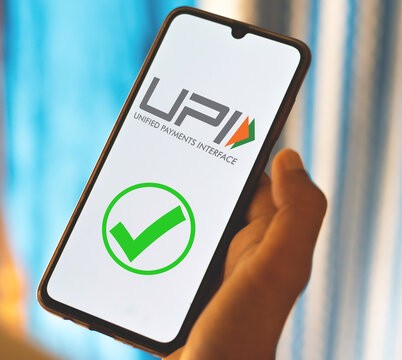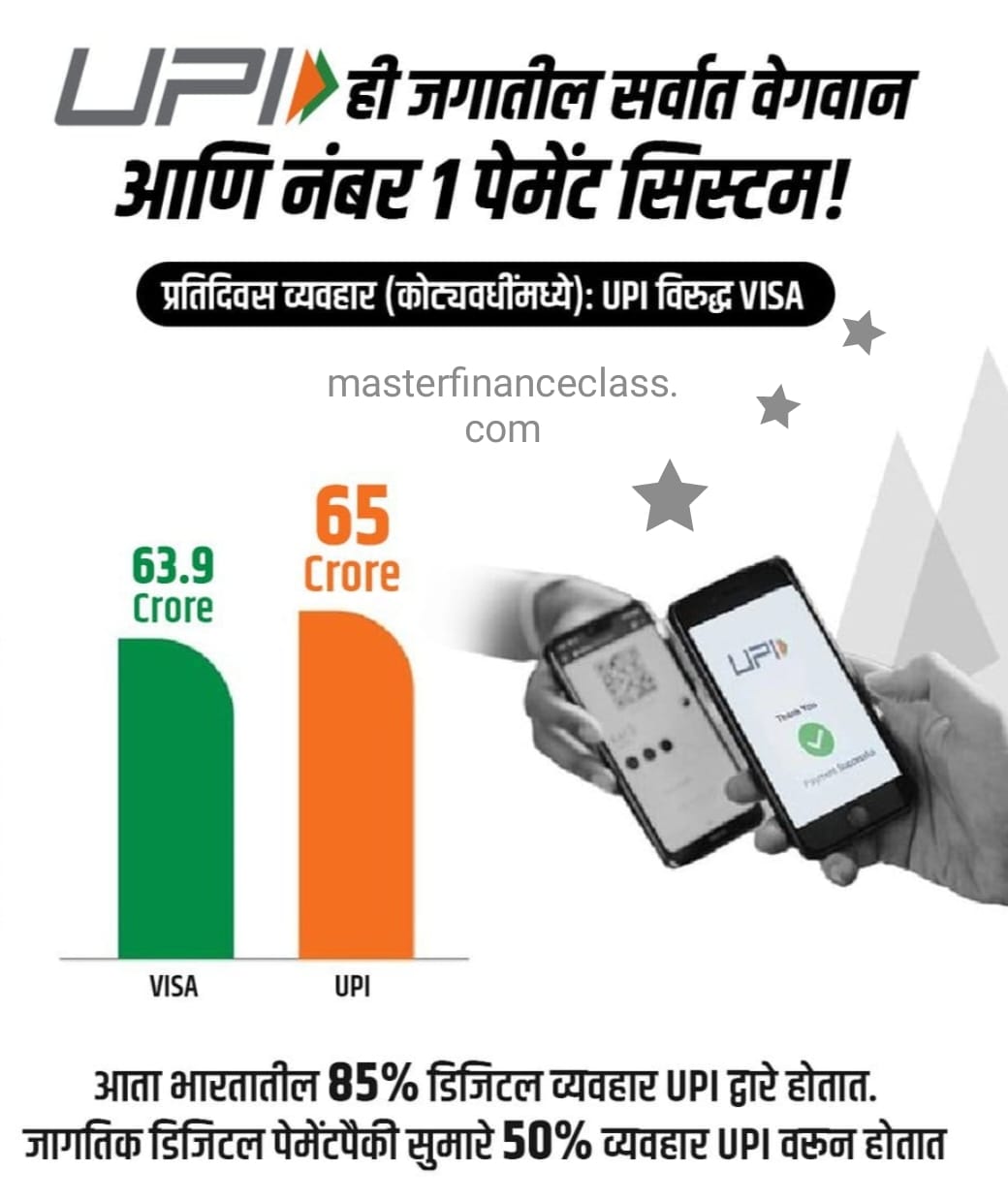India’s digital revolution has seen many milestones, but few innovations have been as transformative as the Unified Payments Interface (UPI ID). Introduced in 2016, UPI has redefined how Indians send and receive money—securely, instantly, and without the need for cash or cards.
UPI ID has not only redefined how Indians send and receive money—securely, instantly, and without the need for cash or cards—but also played a major role in saving money by eliminating fees and reducing cash-handling costs.
This article explores the origin, evolution, and impact of UPI ID, and how it made India a global leader in digital payments.

Table of Contents
ToggleWhat is UPI ID?
UPI (Unified Payments Interface) is a real-time payment system developed by the National Payments Corporation of India (NPCI). It allows users to transfer money between bank accounts using a mobile phone and a unique UPI ID, without needing to remember bank account numbers or IFSC codes.
Who Created UPI ID?
UPI ID was developed by the NPCI (National Payments Corporation of India) in collaboration with the Reserve Bank of India (RBI) and the Indian Banks’ Association (IBA).
- UPI (Unified Payments Interface) is mainly used in India, but it’s also available in a few other countries like Bhutan, Nepal, France, Singapore, the UAE, Mauritius, and Sri Lanka.
- In addition, Non-Resident Indians (NRIs) living in countries such as Australia, Canada, and the UK can also use UPI to send money or make payments in Indian Rupees (INR) back in India.
Key figures:
- NPCI: The organization behind UPI.
- Raghuram Rajan: Then RBI Governor, under whose leadership UPI was conceptualized.
- Nandan Nilekani: Former UIDAI chairman who played a key advisory role in India’s digital infrastructure, including Aadhaar and UPI.
Timeline: The History of UPI
🏁 2016 – UPI Launch
- April 11, 2016: UPI was launched by NPCI with support from RBI and 21 member banks.
- August 2016: UPI went live for public use.
- BHIM App: Launched in December 2016 by PM Narendra Modi, the BHIM app was the government’s official UPI app.
🚀 2017 – Adoption Begins
- Mobile wallets like PhonePe and Google Tez (now Google Pay) integrated UPI.
- E-commerce and utility bill payments adopted UPI.
- Monthly transactions crossed 10 million.
📈 2018–2019 – Rapid Growth
- UPI became the fastest-growing digital payment platform in India.
- Introduction of features like UPI 2.0, which included overdraft facility, QR-based payments, and invoice support.
🌍 2020–2022 – Pandemic Push & Global Interest
- COVID-19 accelerated UPI use for contactless payments.
- In 2022, UPI clocked over 7 billion transactions a month.
- Countries like Singapore and UAE showed interest in UPI integration.
🌐 2023–2025 – Global Expansion
- UPI-linked systems launched in Singapore, Bhutan, France, UAE, and others.
- NPCI International Payments Ltd (NIPL) began driving UPI adoption abroad.
- UPI became available for NRIs using international numbers.
- Support for credit card on UPI was launched (like RuPay Credit Card on UPI).
How UPI ID Changed India
✅ Financial Inclusion: UPI helped millions access banking with just a smartphone and Aadhaar.
✅ Small Merchants Empowered: Even street vendors now accept digital payments.
✅ Cashless Economy: UPI ID reduced India’s dependence on physical cash.
✅ Global Benchmark: India now processes more digital transactions than the US, UK, and China combined (monthly volume).
Key Milestones in Numbers
🌐 500+ banks live on UPI ID
📱 500+ million UPI ID users
💸 14+ billion transactions per month as of 2025
💰 Over ₹20 lakh crore in monthly transaction value
UPI ID in the Future

The future of UPI is looking even brighter:
- Voice-based UPI for feature phones
- AI-powered fraud detection
- Cross-border payments
- Integration with CBDC (Central Bank Digital Currency) in India
📋 Standard UPI Limits (NPCI Guidelines)
- Per transaction limit: Up to ₹100,000
- Daily overall limit: ₹100,000
- Maximum transactions per day: 20 for peer‑to‑peer (P2P) transfers
- Per‑transaction limit: ₹10,000
Cooling‑Period for New Users
- In the first 24 hours after setting/resetting UPI PIN:
- Per‑transaction + daily limit = ₹5,000 (both Android & iOS, though iOS may enforce it for up to 5 days)
🏦 Bank‑Specific Variations
- While NPCI sets the upper cap, individual banks may impose lower limits, or define weekly/monthly caps (e.g., IDFC: ₹30 lakh/month; SBI typically aligns with ₹1 lakh/day)
- Check with your bank for any extra restrictions.
Key Takeaways:
- Regular UPI use: ₹1 lakh/day, max 20 P2P transactions
- Special sectors: Limits extend up to ₹2 to ₹5 lakh per transaction
- UPI 123Pay: Meant for feature phones—₹10,000 max per transfer
- New users: ₹5,000 cooling limit for first day
Tips:
- For everyday use, stay well within ₹1 lakh/day.
- For high-value payments (e.g., hospital bills, IPOs), verify that your merchant/institution supports the ₹5 lakh cap.
- Understand your bank’s specific rules, which may slightly vary.
- Be aware of the cooling period when you first set or reset your UPI PIN.
UPI Security Features
- Two-Factor Authentication (2FA):
- UPI transactions require mobile number verification and a 4- or 6-digit UPI PIN.
- This is compliant with RBI’s two-factor authentication guidelines.
- Device Binding:
UPI is linked to a specific mobile device and SIM card, adding a layer of security.
- End-to-End Encryption:
All UPI transactions are encrypted, making it difficult for third parties to intercept data.
Real-Time Monitoring by Banks & NPCI:
- UPI traffic is monitored for suspicious activity patterns.
- Velocity checks and transaction risk scores are used.
- Transaction Limits:
- Daily and per-transaction limits are imposed (e.g., ₹1 lakh per day for most apps).
- Some apps also have cooling periods after PIN setup or changes.
Common Types of UPI Frauds
- Phishing Links:
Fraudsters send fake links pretending to be from banks or UPI apps.
- Request Money Scam:
Scammers trick users into approving a collect request.
- Screen Sharing/Remote Access:
Fraudsters ask victims to install apps like Any Desk or TeamViewer to access their devices.
- Fake Customer Care:
Victims are duped by calling fake numbers found online posing as UPI support.
- QR Code Scam:
Scammers send a QR code to “receive” money, but it’s actually a payment QR.
Fraud Prevention Tips
- NEVER share your UPI PIN, OTP, or debit card details.
- NEVER approve a “Collect Request” unless you’re expecting it.
- Do not scan unknown QR codes unless you’re making a payment to a verified recipient.
- Install apps only from official app stores.
- Keep your phone and UPI app updated with the latest security patches.
- Use app locks and screen locks for added security.
- Report lost or stolen phones immediately to your bank and telecom provider.
What to Do If You're a Victim
1. Immediately inform your bank via helpline or visit a branch.
2. Call the National Cyber Crime Helpline: 1930.
3. File a complaint on [https://cybercrime.gov.in](https://cybercrime.gov.in).
4. Contact UPI App Support (PhonePe, Google Pay, Paytm, etc.).
Additional Measures by NPCI
- Dispute Redressal Mechanism: Timelines defined for complaint resolution.
- Risk Engine Integration: Banks can flag and hold suspicious transactions.
- Tokenization: For recurring transactions and added card security.
Yes, you can create multiple UPI IDs with the same or different banks and apps.
Yes, most UPI apps allow you to edit or set a new primary UPI ID.
Not exactly. Your mobile number can be part of your UPI ID, but the UPI ID itself is a virtual address.
- Open your UPI-enabled app.
- Go to Settings or Profile.
- Tap on Manage UPI IDs.
- Choose to create a new ID or set a default one.
conclusion:
The creation of UPI has not only transformed how Indians pay, but it has also positioned India as a global pioneer in digital finance. What started as a government-led initiative is now a backbone of India’s cashless economy—and a model for the rest of the world.
If you’re not using UPI yet, now is the time. It’s fast, secure, and changing the way we think about money.
